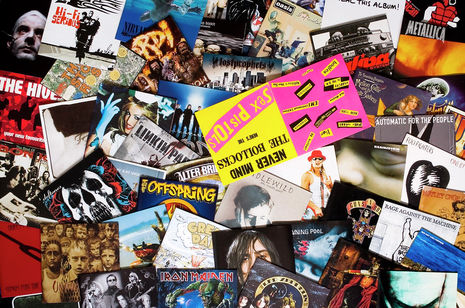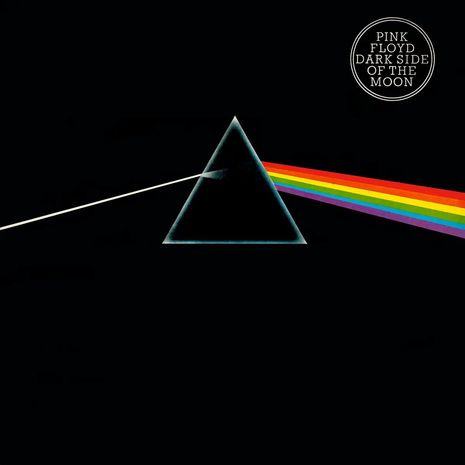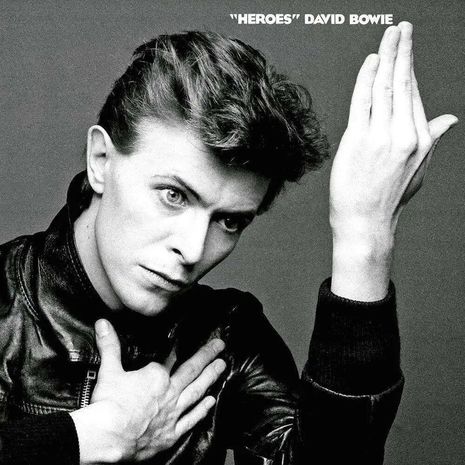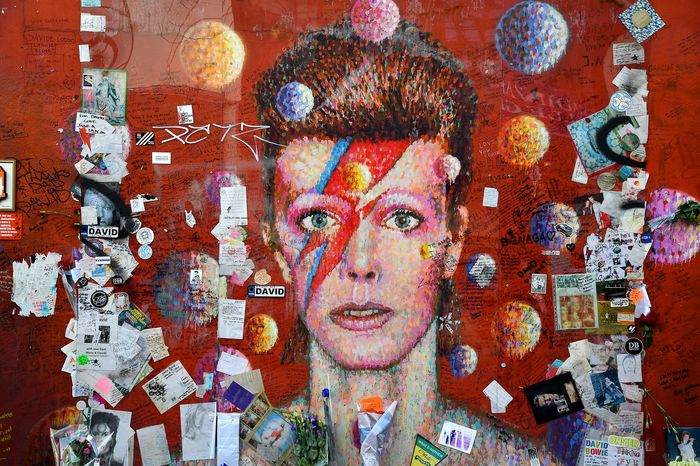Albums, vinyl and the musical experience
In his last column for the term, Daniel Starkey reflects on the aged, yet timeless beauty of vinyl albums and their impact on the listening experience

Albums have long been the beating heart of the music industry. While non-album material, like singles, have also played an undeniable role, albums have remained the most artistically important and identifiable aspects of artists’ repertoires. One need only think of such albums as David Bowie’s The Rise and Fall of Ziggy Stardust and the Spiders From Mars (1972), or Pink Floyd’s The Dark Side of the Moon (1973), to see the iconic power of the album as a medium for music.

While albums certainly remain an important part of music today, their place as the primary medium for listening to music has somewhat fallen out of place. With the digitisation of music, and particularly the rise of streaming platforms such as Spotify and Apple Music, it has become much easier and more commonplace to listen to songs individually, or in new compilations and playlists, separated from the “context” of the studio albums they originally belonged to.
“There is something particularly special about listening to albums as a whole”
Granted, there have undoubtedly been benefits to these changes in how we consume music. As I discussed in my first article for Varsity, the use of individual songs in soundtracks has proved invaluable to introducing older music to new audiences (seen recently, for instance, in Kate Bush’s resurgence in popularity following the use of Running Up That Hill (1985) in season four of Stranger Things), along with serving as an ingenious framing device for establishing programmes’ time periods. Nevertheless, I think that there is something particularly special about listening to albums as a whole; something that is eroded when songs are taken out of the “context” of their respective original albums.
Listening to albums is the way in which an artist’s creative statement can be most fully appreciated. They can be thought of as symphonies, rather than mere collections, as each track forms an integral part of the work, helping to convey an overall story or idea. Some albums, like The Dark Side of the Moon, arguably cannot truly be split into different tracks at all since each segment of the album flows from one to another (with the exception of the break between record sides), notwithstanding their strong thematic links.
“Visual art can greatly further the depth of character of an album”
Even in cases less extreme than this, the composition of albums often matters a lot, where separation of songs from their context does not tell the “full story”. Together, the tracks of Queen’s News of the World (1977), for example, form a picture of the process of growing up and its associated emotions. Choices in the album’s composition help convey aspects of this: Sheer Heart Attack’s ode to youthful energy is suddenly cut short, mid-bar, by the lamentations of “All Dead, All Dead”. As is the case with poetry collections, the character and sequencing of component parts help construct and add meaning to the overall artistic work. Indeed, Led Zeppelin famously released very few singles (none of which were in their native country), partly to strengthen their credentials as a live act but also to preserve the integrity of their albums so that in many cases, their songs had to be heard in the context of an album.
An integral part of albums is also visual art. As I discussed in my recent article looking back on David Bowie’s Ziggy Stardust album, fifty years after its release, visual art can greatly further the depth of character of an album, particularly through thematic links to the music itself. It also serves as a means of deepening the harmony between the album’s individual tracks; it is a label that helps the listener visualise and understand the album and its “story” as a whole. The iconic cover of News of the World, at once both disturbing and melancholy enhances the ideas and emotions conveyed by the music itself, while also remaining highly visually appealing to observe, making it instantly identifiable. In this way, artwork fuses with overarching concepts to carry the artistic expression of albums to new levels.

Considering music in this way makes me appreciate vinyl even more. Its physical limitations can often work as an artistic advantage: the need to turn records over halfway through listening can provide a break to further absorb what has just occurred. It also provides an opportunity to mark a musical change in albums. Queen’s second album, Queen II (1973) is divided into “side white” and “side black”, adding an intriguing duality to the overarching concept. On the other hand, David Bowie’s “Heroes” (1977) on its second side shifts towards a much more ambient, experimental style than its first half. Among musical media, vinyl also has the best scope for visual art. Its size, and lack of hard plastic casing (looking at you, cassettes) provides ample space to create visually appealing covers. Even the physical experience of handling an album can further a sense of connection between listener and music. Another physical limitation, the awkwardness of fast-forwarding and skipping tracks on vinyl, along with its relative impracticality, makes vinyl particularly conducive towards listening to albums in the way I’ve discussed. Vinyl makes it more natural to listen to whole albums, and encourages the listener to indulge deeper into the experience of listening.
It’s all part of the idea that music should be an experience, something to enjoy for its own sake, and not just something in the background. Listening to music in album form can be a way of slowing down and engaging with art in a deep and meaningful way, and vinyl, as a musical medium, encourages this kind of musical experience in a very unique way. Albums, and the experience of listening to music through vinyl, thus hold a very special place in my heart.
 News / Caius mourns its tree-mendous loss23 December 2025
News / Caius mourns its tree-mendous loss23 December 2025 Comment / Yes, I’m brown – but I have more important things to say22 December 2025
Comment / Yes, I’m brown – but I have more important things to say22 December 2025 News / Cambridge welcomes UK rejoining the Erasmus scheme20 December 2025
News / Cambridge welcomes UK rejoining the Erasmus scheme20 December 2025 News / CUP announces funding scheme for under-represented academics19 December 2025
News / CUP announces funding scheme for under-represented academics19 December 2025 Interviews / Politics, your own way: Tilly Middlehurst on speaking out21 December 2025
Interviews / Politics, your own way: Tilly Middlehurst on speaking out21 December 2025











